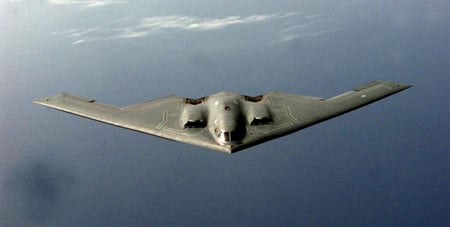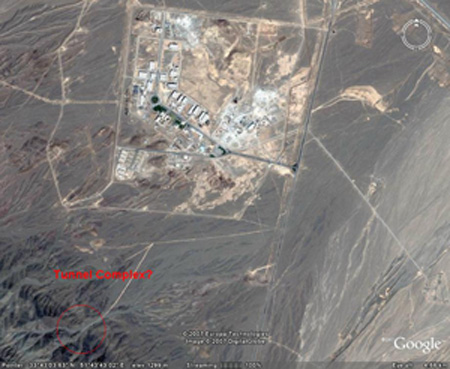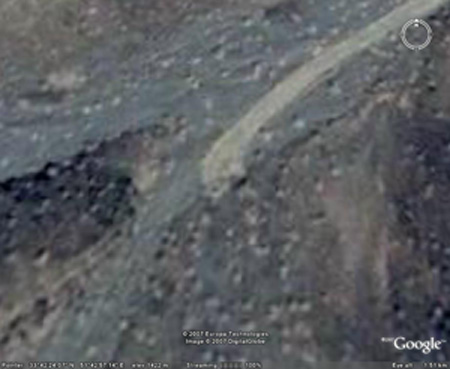Original URL: https://www.theregister.com/2007/07/20/stealth_n_iranians_play_catchup/
Stealth bombers to get bunker-nobbling weapons
As new Iranian nuke bunker appears on Google Earth
Posted in Science, 20th July 2007 12:21 GMT
American stealth bombers will soon be equipped to drop the Massive Ordnance Penetrator (MOP), the gigantic deep-bunker-blasting bomb currently being developed by the Yanks.
Northrop Grumman announced the relatively cheap $2.5m stealth-bomber refit contract yesterday. An undisclosed number of the US Air Force's 22 B-2 "Spirit" bombers will each be able to carry a brace of 15-tonne MOPs in around seven months' time.

The B-2 Stealth Bomber, soon to be equipped with Massive Ordnance Penetrators.
The US Air Force says the B-2's stealth characteristics give it "the unique ability to penetrate an enemy's most sophisticated defenses and threaten his most valued, and heavily defended, targets".
The MOP mega-bomb, second heaviest conventional weapon ever built, is said to be able to drill through many metres of earth or concrete protection. Only 20 per cent of the weapon's weight is explosives; the rest is a hardened metal case. The idea is that the MOP will fall from high altitude and strike its target like a supersonic - or even hypersonic - spear, punching through to explode at the correct depth.
There isn't much doubt regarding whose air defence the stealth-bombers might fly through, or what valued targets they might hit with their penetrating superbombs.
The uranium-enrichment facility at Natanz is generally thought to be the main point of vulnerability in the Iranian nuclear programme, where weapons-grade metals could be produced. Most analyses - some even publicly available - reckon Natanz is the big target for the US (or Israel) in the event of a move to cripple Iran's nuke effort.
Perhaps unsurprisingly, significant parts of the Natanz facilities are underground, buried beneath a few metres of concrete and perhaps 75 feet of earth. The MOP wouldn't have a problem with that, though. In any case, Mohammed el-Baradei of the UN says Iran is at present producing only small amounts of uranium.
Things may not be totally under control, however. There are recent reports that civilian satellite pictures show new digging efforts in the mountains just outside the Natanz facility. Analysts worldwide believe the pics show a tunnel complex being developed.
The Washington Post quotes David Albright, a former UN weapons inspector, as saying: "The tunnel complex certainly appears to be related to Natanz... it is probably for storage of nuclear items."
Albright's Institute for Science and International Security thinktank provided the Post scribes with copies of the snaps, taken by Digital Globe. Fortunately, the Reg and its readers can have a look too, as Digital Globe is a provider to our old friend Google Earth.

The Natanz uranium enrichment complex.

Tunnel complex entrance? Could be ...
Or Google Earth users can poke about for themselves, here.
A large enough layer of rock could stop even the MOP. On the other hand, this may just be a storage or waste facility.
The UN nuke watchdog told the Post on Friday: "We have been in contact with the Iranian authorities about this, and we have received clarifications," but didn't go into detail.
Nor would US intelligence officials, though they confirmed that they were aware of the situation.
IS the new MOP/B-2 contract a response to satellite intel? Is the US government worried Natanz or the uranium it produces could soon be invulnerable?
Perhaps the Pentagon just wants to look as though it's on top of things. The bunker-buster contract was awarded, according to Northrop, just days before the Natanz story broke in the civilian press. ®